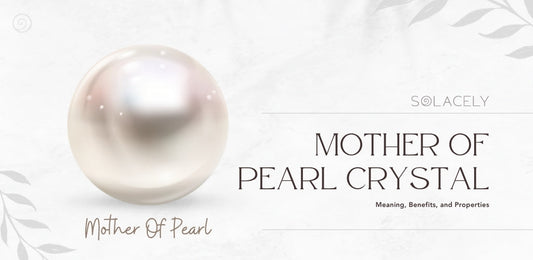Understanding the Chakra System
The chakra system is an ancient framework originating from Eastern spiritual traditions, used to understand the human body's subtle energy centers. Chakras are often depicted as spinning wheels or vortexes of energy that correspond to different aspects of our physical, emotional, and spiritual well-being.
Basics of Chakras
Chakras are integral to energy flow in the body and are central to various practices such as yoga, meditation, and healing therapies. The term 'chakra' is derived from the Sanskrit word for 'wheel' or 'circle.' These energy centers are believed to be connected by channels called nadis, which facilitate the movement of prana, or life force, throughout the body.
Each chakra is associated with specific colors, elements, sounds, and psychological functions, and they play a pivotal role in the balance and health of our bodies and minds. An imbalance or blockage in a chakra can lead to physical, emotional, or mental health issues, prompting practices focusing on chakra-balancing techniques to restore harmony.
The Seven Main Chakras
Seven main chakras are commonly recognized in the chakra system, each located at a specific point along the spine:
- Root Chakra (Muladhara): Located at the base of the spine, it is associated with the color red and represents our foundation and feeling of being grounded—more on root chakra characteristics.
- Sacral Chakra (Svadhisthana): Situated just below the navel, this chakra is linked with the color orange and governs our connection to others, creativity, and sexual energy. Explore sacral chakra meaning.
- Solar Plexus Chakra (Manipura): Found in the stomach area, it is associated with yellow and relates to our self-esteem and personal power. It is understanding solar plexus chakra function.
- Heart Chakra (Anahata): Located in the center of the chest, the heart chakra is associated with the color green and is the center of love, compassion, and connection. Discover the heart chakra significance.
- Throat Chakra (Vishuddha): Positioned in the throat, it is linked with the color blue and governs communication and expression. Learn about throat chakra properties.
- Third Eye Chakra (Ajna): Located on the forehead between the eyes, this chakra is represented by indigo and is associated with intuition and insight.
- Crown Chakra (Sahasrara): Found at the top of the head, it is associated with the color violet and represents our spiritual connection and consciousness. Crown chakra definition.
Understanding each chakra's role and interaction is essential for those embarking on self-discovery and healing. For a comprehensive explanation of the chakra system, readers can refer to the explanation of chakras. Engaging in practices such as root chakra yoga poses or using heart chakra healing stones can aid in aligning and opening the heart chakra and other chakras, contributing to overall well-being.
The Heart Chakra Overview
The heart chakra, central to the chakra system, is a nexus of love and emotional well-being. This section delves into its location, symbolism, and the physical and emotional aspects it governs.
Location and Symbolism
The heart chakra, also known as Anahata in Sanskrit, claims its position as the fourth chakra in the human chakra system. It resides at the center of the chest, near the height of the thymus gland, nestled behind the sternum. Serving as a bridge between the lower and upper chakras, the heart chakra unifies the physical and spiritual aspects of being.
Symbolism is intrinsic to the heart chakra, often depicted as a green lotus with twelve petals. These petals represent the divine qualities of the heart, such as bliss, peace, harmony, love, understanding, empathy, clarity, purity, unity, compassion, kindness, and forgiveness. The heart chakra's element is air, signifying the free-flowing nature of love and the ease with which it can permeate all aspects of life.
Emotional and Physical Aspects
The Anahata chakra plays a pivotal role in the body's emotional and physical domains. It is intrinsically linked to the heart, lungs, arms, hands, and the thymus gland, forming part of the cardiovascular and respiratory systems. These associations underscore the heart chakra's influence on the body's ability to circulate life energy and sustain vitality.
Emotionally, the heart chakra is the wellspring of love for oneself and others. The center of compassion, kindness, and a sense of belonging emanate. When the heart chakra is balanced, individuals can experience profound love and connection, acceptance of life as it unfolds, and the ability to share generously without expectations. This balance fosters healthy relationships and an inner sense of peace.
Physically, the heart chakra's health is reflected in the proper functioning of the body areas it governs. Balanced energy in Anahata ensures optimal operation of the heart and lungs, fortifies the immune system, and maintains the strength and flexibility of the upper body muscles.
Explore our comprehensive guide on chakra for more insights into the chakra system and each chakra's role, including the heart chakra's significance. To discover specific practices for nurturing the heart chakra, consider incorporating heart chakra affirmations into your daily routine or engaging with heart chakra healing stones.
Signs of Imbalance
A balanced heart chakra is essential for experiencing love, compassion, and connection with others. Recognizing the signs of an imbalance can help individuals take steps to realign this central energy point.
Emotional Manifestations
An imbalance in the heart chakra often surfaces through emotional symptoms. Individuals may experience intense jealousy, fear of intimacy, and challenges in forgiving others, indicating a blockage. Moreover, loneliness, disconnection, and feelings of unworthiness can plague one's emotional state. Additionally, resentment may weigh heavily on the individual, making it challenging to release past hurts and move forward.
The following table summarizes the emotional signs associated with an imbalanced heart chakra:
| Emotional Signs | Description |
| Jealousy | A fear of losing someone or something, often accompanied by suspicion and anger towards rivaling parties. |
| Fear of Intimacy | An apprehension towards forming close relationships, potentially due to past wounds or betrayals. |
| Difficulty Forgiving | Holding onto grudges and an unwillingness to let go of past transgressions. |
| Loneliness | Feeling isolated, even when surrounded by others, and a sense of not belonging. |
| Resentment | Persistent bitterness towards oneself or others, stemming from perceived wrongdoings. |
For those struggling with these emotional symptoms, embracing practices like heart chakra affirmations can aid in restoring balance.
Physical Symptoms
Physical manifestations of an imbalanced heart chakra can include chest pain, heart palpitations, and respiratory issues such as asthma or shortness of breath. These symptoms can be both alarming and discomforting, often reflecting deeper emotional imbalances.
Here is a summary of the physical symptoms that may indicate a heart chakra imbalance:
| Physical Symptoms | Possible Association |
| Chest Pain | May represent underlying tension or emotional stress related to love and relationships. |
| Heart Palpitations | Could be linked to anxiety or emotional distress connected to heart chakra issues. |
| Respiratory Problems | Breathing difficulties that might occur due to emotional blockages in the heart chakra. |
Recognizing these signs is the first step toward healing. By integrating chakra-focused methods such as yoga, meditation, and the use of healing stones aligned with the heart chakra, one can begin to address these imbalances. For a comprehensive understanding of the chakra system and associated imbalances, readers can refer to the chakras explained.
Methods to Open the Heart Chakra
The heart chakra, known as Anahata in Sanskrit, is the fourth primary chakra in the human body and plays a pivotal role in fostering love, compassion, and connection with others. When balanced and open allows individuals to experience deep bonds and empathetic relationships. For those seeking to enhance their emotional well-being and connections, several practices can be employed to open the heart chakra.
Meditation and Yoga
Meditation and yoga are critical practices for aligning and opening the heart chakra. These activities encourage mindfulness, leading to greater peace and connection with oneself and others.
Heart-centered meditation focuses on visualizing a green light or energy in the heart area, representing the heart chakra's color. Heart chakra affirmations can reinforce the intention to open and heal this energy center.
Yoga poses, or asanas, open the chest area and promote energy flow through the heart chakra. Poses like the Cobra (Bhujangasana), Camel (Ustrasana), and Cow Face (Gomukhasana) are recommended for their heart-opening effects. For more information on specific poses, please refer to our guide on root chakra yoga poses, which may complement heart chakra practices.
Breathwork and Aromatherapy
Breathwork is another effective method for activating the heart chakra. Techniques such as deep breathing and pranayama (yogic breathing) can help to dissolve blockages and encourage a sense of calmness.
Aromatherapy can also be used to support the opening of the heart chakra. Essential oils associated with heart chakra healing, such as rose, jasmine, and lavender, can be diffused or applied topically to foster an atmosphere of love and tranquility. For more details on aromatherapy for different chakras, visit our section on throat chakra aromatherapy.
Loving-Kindness Practices
Loving-kindness practices are essential for nurturing the heart chakra. This includes the cultivation of self-compassion, forgiveness, and unconditional love towards oneself and others.
Practicing loving-kindness meditation encourages individuals to send well-wishes to themselves, loved ones, strangers, and even those with whom they may have conflicts. This practice opens the heart chakra and contributes to a more compassionate and connected world.
Additionally, acts of kindness and service to others can be influential in opening the heart chakra. Engaging in volunteer work or simply helping can amplify feelings of love and empathy.
Cultivating gratitude is another method to nourish the heart chakra. Keeping a gratitude journal or taking time each day to reflect on things one is thankful for can shift the focus to positive emotions, thus contributing to the opening of the heart chakra.
For a comprehensive understanding of the chakra system and additional methods to enhance chakra health, readers might explore the chakras explained and chakra balancing techniques. Through these practices, individuals can work towards achieving a balanced and open heart chakra, leading to more prosperous and more fulfilling relationships.
The Role of the Heart Chakra
The heart chakra, also known as Anahata in Sanskrit, is vital to our emotional and relational well-being. Central to the chakra system, it bridges the lower chakras associated with material existence and the upper chakras related to spirituality. Understanding the role of the heart chakra is essential for fostering deep, meaningful connections and embracing love and compassion in daily life.
Love and Compassion
At the core of the heart chakra's influence is the capacity for love and compassion. An open heart chakra is said to cultivate an expansive sense of love—not only for others but also for oneself. It nurtures empathy, allowing individuals to truly understand and share the feelings of another, which is crucial for forming deep bonds and showing genuine care.
The heart chakra is inherently associated with love, empathy, forgiveness, and self-acceptance. When balanced, it can manifest as a profound love for life and an appreciation for the interconnectedness of all beings. This balance can be cultivated through heart chakra affirmations, reinforcing positive emotions and self-acceptance.
Connection and Healing
An open heart chakra is also instrumental in healing emotional wounds and fostering connections. It allows individuals to form and maintain relationships that are nurturing and reciprocal. With its energy centered on love and acceptance, the heart chakra encourages a forgiving attitude, and the healing of past grievances, which is essential for moving forward in relationships without carrying the weight of past hurts.
The power of the heart chakra extends to its ability to facilitate a sense of unity and healing, impacting not only personal relationships but also one's overall approach to interacting with the world. Opening the heart chakra can create a greater sense of connection, making social interactions more harmonious and fulfilling. Studies and resources such as those found at Well+Good highlight the significance of this chakra in achieving a balanced and connected life.
By nurturing the heart chakra, individuals open themselves up to experiencing life through the lens of compassion and love. This transformation can lead to more profound and harmonious relationships, greater connectedness to others, and overall emotional well-being. As with all aspects of the chakra system, it's a journey of continuous growth and balancing—for more on chakra dynamics, explore our comprehensive guide.
Supporting Practices for Balance
In addition to specific techniques like meditation and affirmations, various supporting practices can help maintain the balance of the heart chakra. These practices include diet and nutrition, using crystals and healing stones, and engaging in nature and gratitude activities.
Diet and Nutrition
What you consume can influence your chakras; the heart chakra is no exception. Green foods like leafy vegetables and fruits resonate with the heart chakra's color frequency. Including these foods in your diet can aid in opening and balancing this chakra.
Here are some foods that are beneficial for the heart chakra:
| Food Type | Examples |
| Leafy Greens | Spinach, kale, collard greens |
| Green Vegetables | Broccoli, peas, green beans |
| Green Fruits | Green apples, limes, kiwi |
| Beverages | Green tea, matcha |
Consuming these foods regularly, along with a balanced diet, can support the overall health of the heart chakra.
Crystals and Healing Stones
Crystals and healing stones are often used to enhance chakra healing practices due to their energetic properties, for the heart chakra, stones that emit green or pink vibrations like rose quartz, jade, green calcite, green tourmaline, or green aventurine are ideal. These stones can be placed on the chest during meditation or carried as personal talismans to encourage love energy and unblock the heart chakra. To explore the different stones and their properties, check out our selection of heart chakra healing stones. Also check out our seven chakra bracelet
| Stone | Color | Benefit |
| Rose Quartz | Pink | Encourages self-love and healing |
| Jade | Green | Attracts harmony and serenity |
| Green Calcite | Green | Soothes and revitalizes the heart |
| Green Tourmaline | Green | Promotes compassion and patience |
| Green Aventurine | Green | Brings prosperity and well-being |
Nature and Gratitude Activities
Connecting with nature and practicing gratitude are potent ways to open and balance the heart chakra. Spending time outdoors, such as walking in a park or gardening, can help you feel more grounded and connected to the earth, fostering a sense of peace and openness in the heart chakra. Engaging in gratitude practices, such as journaling or simply reflecting on things you are thankful for, aligns your energy with the heart chakra's essence of love and compassion.
Integrating these supporting practices into your daily routine can cultivate a more balanced and harmonious heart chakra, enhancing your ability to love and connect with others. Remember, opening the heart chakra is a journey, and these practices can serve as valuable tools along the path to deeper relationships and inner healing.













